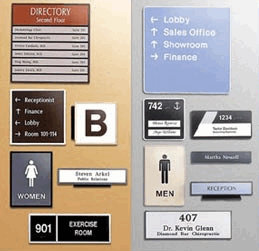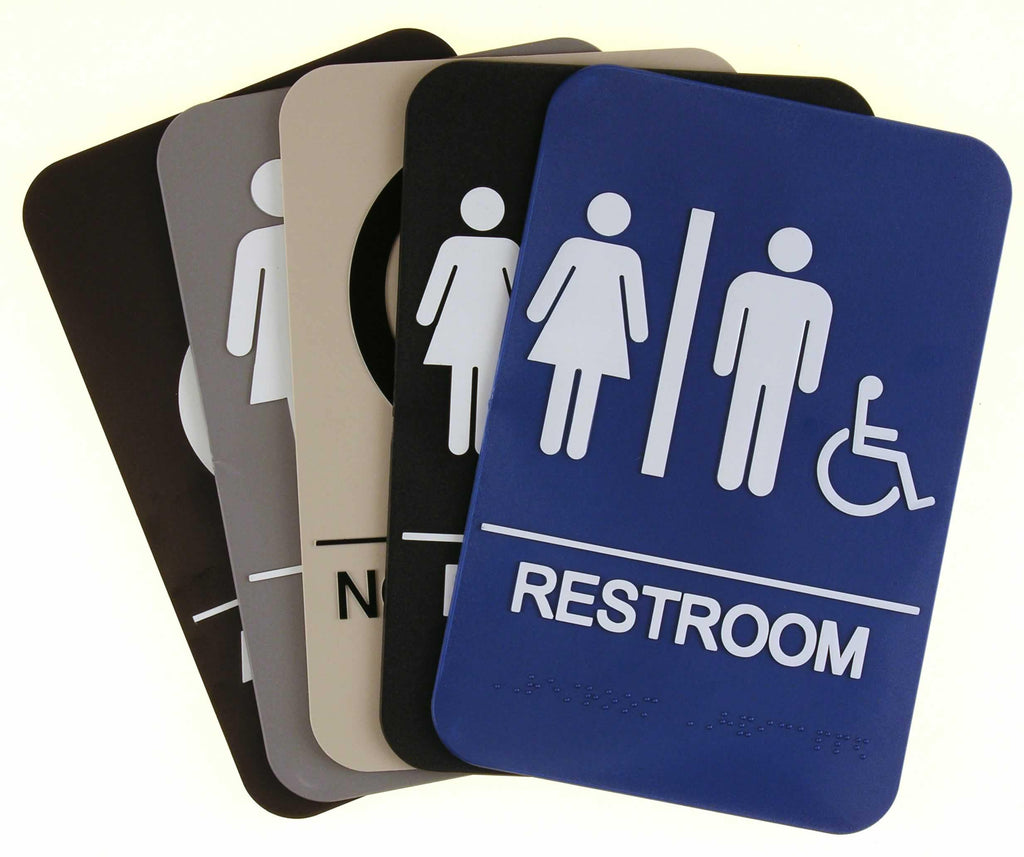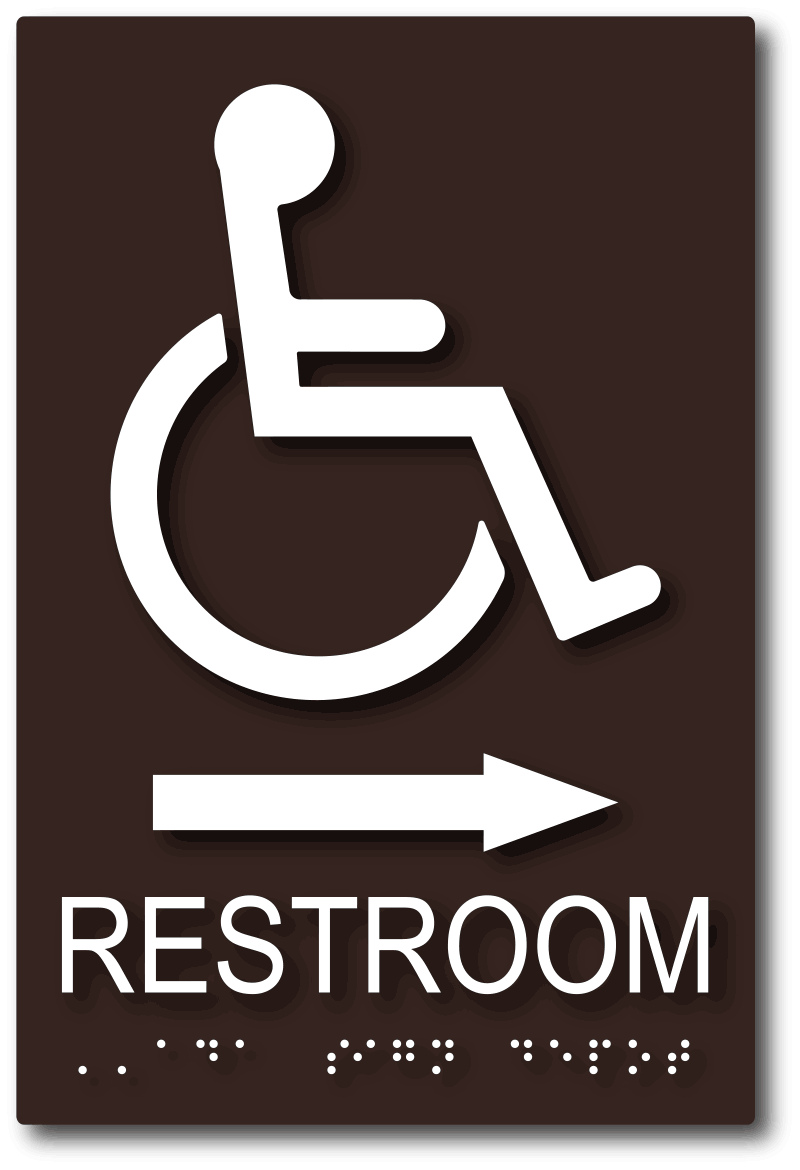Tailoring ADA Signs to Fulfill Your Certain Requirements
Tailoring ADA Signs to Fulfill Your Certain Requirements
Blog Article
Exploring the Secret Attributes of ADA Indications for Enhanced Availability
In the realm of access, ADA indicators serve as silent yet powerful allies, ensuring that spaces are accessible and inclusive for people with disabilities. By integrating Braille and responsive elements, these signs damage barriers for the aesthetically damaged, while high-contrast shade plans and understandable typefaces cater to diverse visual needs.
Value of ADA Conformity
Guaranteeing conformity with the Americans with Disabilities Act (ADA) is essential for promoting inclusivity and equivalent access in public spaces and workplaces. The ADA, passed in 1990, mandates that all public centers, employers, and transport services accommodate people with specials needs, ensuring they enjoy the same legal rights and chances as others. Conformity with ADA standards not only meets legal commitments however additionally boosts an organization's credibility by showing its commitment to variety and inclusivity.
One of the essential facets of ADA conformity is the implementation of accessible signs. ADA indications are created to ensure that people with impairments can easily browse via spaces and structures. These indications have to comply with details guidelines concerning dimension, typeface, shade contrast, and positioning to assure presence and readability for all. Properly executed ADA signage aids get rid of obstacles that individuals with handicaps typically run into, therefore promoting their self-reliance and confidence (ADA Signs).
In addition, adhering to ADA guidelines can reduce the threat of possible penalties and lawful repercussions. Organizations that stop working to adhere to ADA guidelines might encounter suits or charges, which can be both destructive and economically troublesome to their public picture. Hence, ADA conformity is important to promoting an equitable atmosphere for everybody.
Braille and Tactile Elements
The incorporation of Braille and tactile aspects right into ADA signage embodies the concepts of availability and inclusivity. It is usually positioned beneath the equivalent message on signage to make sure that individuals can access the info without visual support.
Responsive elements extend past Braille and include raised characters and signs. These components are made to be discernible by touch, allowing individuals to identify space numbers, restrooms, departures, and other essential areas. The ADA establishes certain guidelines relating to the dimension, spacing, and positioning of these tactile elements to optimize readability and make sure uniformity throughout different settings.

High-Contrast Color Pattern
High-contrast color schemes play a critical role in enhancing the presence and readability of ADA signs for people with visual problems. These systems are necessary as they optimize the difference in light reflectance between text and history, guaranteeing that indicators are quickly noticeable, also from a range. The Americans with Disabilities Act (ADA) mandates making use of details shade contrasts to fit those with minimal vision, making it a crucial facet of conformity.
The effectiveness of high-contrast colors depends on their capacity to stand apart in various lighting conditions, including dimly lit settings and areas with glare. Commonly, dark text on a light background or light text on a dark history is employed to attain optimum contrast. As an example, black text on a white or yellow background offers a stark visual difference that aids in fast acknowledgment and understanding.

Legible Fonts and Text Dimension
When taking into consideration the layout of ADA signage, the option of understandable typefaces and proper text dimension can not be overstated. These elements are important for making sure that indicators come to individuals with aesthetic problems. The Americans with Disabilities Act (ADA) mandates that fonts must be sans-serif and not italic, oblique, script, extremely decorative, or of unusual kind. These requirements assist ensure that the text is quickly understandable from a distance and that the personalities are appreciable to varied audiences.
The dimension of the text additionally plays a pivotal function in availability. According to ADA guidelines, the minimum message height need to be 5/8 inch, and it must boost proportionally with watching distance. This is specifically important in public rooms where signage needs to be checked out promptly and properly. Uniformity in message dimension adds to a cohesive visual experience, aiding individuals in navigating atmospheres successfully.
Moreover, spacing in between letters and lines is integral to clarity. Ample spacing protects against characters from showing up crowded, boosting readability. By sticking to these requirements, designers can significantly improve availability, ensuring that signs offers its designated objective for all people, regardless of their aesthetic abilities.
Reliable Positioning Strategies
Strategic placement of ADA signs is important for taking full advantage of ease of access and making sure conformity with lawful criteria. Appropriately located signs guide people with disabilities properly, facilitating navigating in public spaces. Secret factors to consider consist of distance, height, and exposure. ADA guidelines specify that indications should be mounted at an elevation between 48 to 60 inches from the ground to ensure they are within the line of view for both standing and seated individuals. This standard height range is critical for inclusivity, making it possible for mobility device customers and individuals of differing heights to access information effortlessly.
Additionally, signs have to be placed beside the lock side of doors to allow very easy identification before entrance. This positioning assists individuals find rooms and areas without blockage. In cases where there is no door, signs ought to be situated on the closest nearby wall. Uniformity in indicator placement throughout a center boosts predictability, decreasing complication and improving total customer experience.

Verdict
ADA indications play a vital role in advertising accessibility by integrating functions that address the demands of individuals with specials needs. Including Braille and responsive aspects ensures critical details comes to the aesthetically impaired, while high-contrast color design and readable sans-serif fonts improve visibility throughout different illumination problems. Reliable placement strategies, such as appropriate placing heights and tactical places, additionally facilitate navigating. These aspects collectively foster an inclusive environment, emphasizing the relevance of ADA conformity in making certain equal gain access to for all.
In the realm of accessibility, ADA indications serve as silent yet effective allies, guaranteeing that areas are inclusive anonymous and accessible for people with disabilities. The ADA, enacted in 1990, mandates that all public facilities, companies, and transportation solutions accommodate individuals with specials needs, guaranteeing they take pleasure in the same rights and chances as others. ADA Signs. ADA indicators are made to ensure that people with handicaps can quickly browse through areas and buildings. ADA standards state that indications should be installed at an elevation in between 48 to 60 inches from the ground to ensure they are within the line of view for both standing and seated individuals.ADA indications play a crucial role in promoting availability by incorporating features that resolve the demands of people with impairments
Report this page